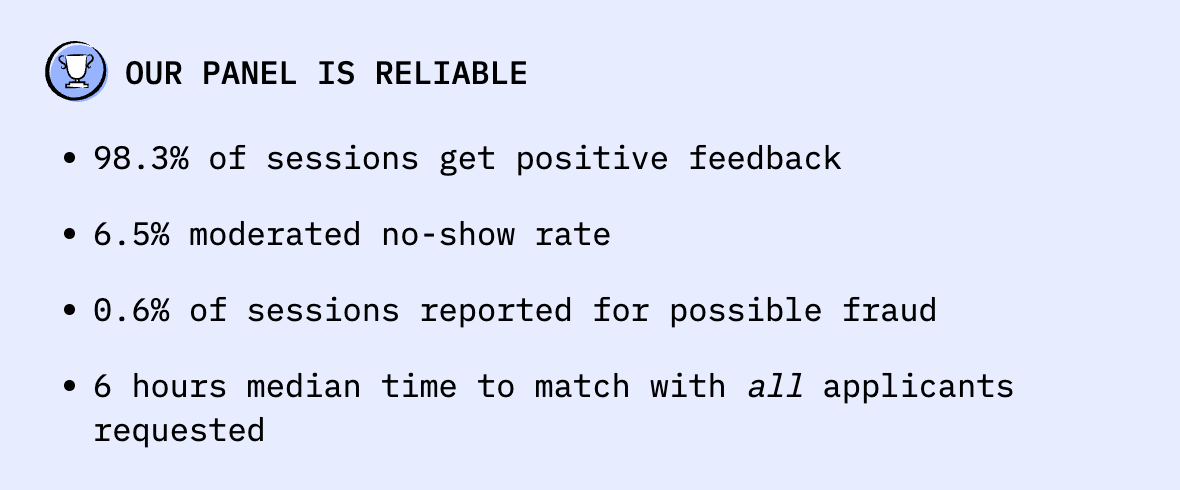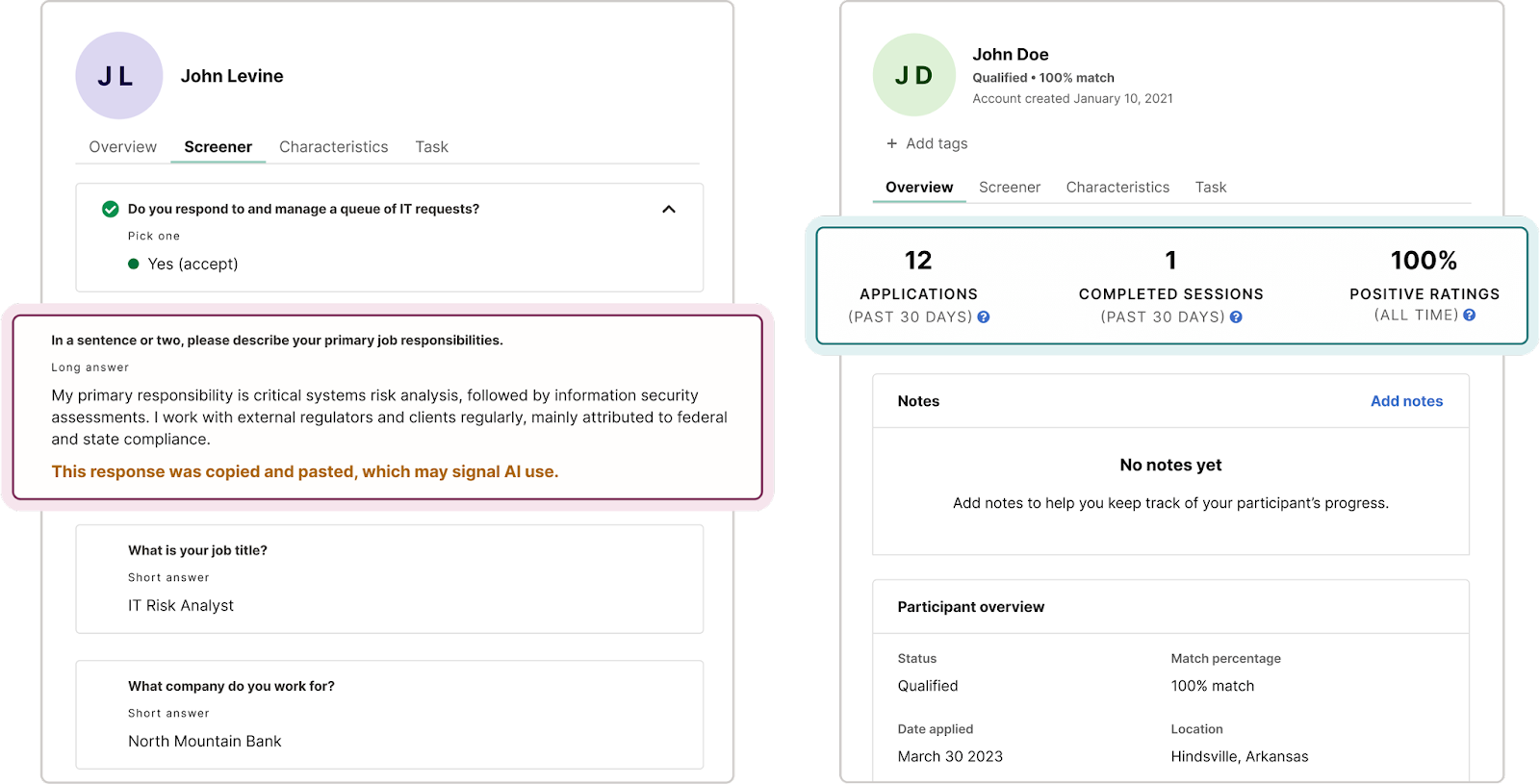

Practical Steps for Preventing Fraud
Even with advanced systems working behind the scenes, researchers play a key role in preventing fraud. Simple, intentional choices during study setup—like how you design your screener or review applicants—can dramatically reduce the risk of fraudulent participants slipping through.
In this lesson of our Preventing & Recognizing Fraud course, you’ll learn practical steps that you can take to prevent fraud, including:
- Choosing a trusted vendor (that’s us 👋)
- Using screener survey best practices
- Reviewing participant quality indicators
- … and more!
Think of these steps as your front-line defense in partnership with our platform’s automated protections.
📹 Prefer watching to reading? This content is available as both an article and a video. Watch our Senior Product Manager, David Prentice, take you through the content in the video below or keep reading to dive in!
Practical steps for preventing fraud
1. Start with a trusted audience (which, if you’re here, you’ve already done!)

The most effective fraud prevention starts before you even launch a study—by choosing a reliable recruitment partner.
User Interviews maintains one of the lowest-fraud participant pools in the industry, thanks to ongoing verification, fraud modeling, and proactive participant removal. By using our platform, you’re already working with a foundation of trust and quality.
Learn more about how we build a high-quality participant audience.
2. Build a strong screener survey
Your screener is your most powerful tool for filtering out bad actors. Well-designed questions can surface authentic, qualified participants—and expose fraudsters. Here are a few best practices to follow when building your screener:
- Avoid leading questions that hint at the “right” answers. For example: If you’re looking to recruit software engineers, don’t ask a question about software engineering expertise, like “are you a software engineer who is proficient python?” It’s easy for fraudsters to guess what you’re looking for when asking a leading question. Instead, ask participants a neutral question, like “which of the following options best describes your work experience” and include software engineer or python in a list of options.
- Use open-ended prompts to verify real knowledge or experience. For example: “Describe how you use [product/tool] in your daily work.”
- Add premium screening options like video prompts or double-screening to confirm authenticity and engagement.
When used together, these methods make it much harder for unqualified respondents to fake their way through.
If you haven’t taken it already, explore our Screener Surveys Deep-Dive course to master screener creation.
3. Review UI’s participant quality indicators.
At User Interviews, we aim to give you everything you need to safely vet applicants to your study. Before confirming participants, review participant quality signals within the UI platform like:
- Recent activity (when they last participated)
- Application time (how quickly they completed their screener)
- Ratings from other researchers
Patterns like repeated rapid-fire applications or inconsistent past feedback can signal low-quality or fraudulent respondents.

4. Expect and plan for AI use.
AI tools have made fraud more sophisticated and widespread—but not all participants who use AI are fraudulent. The best way to stay ahead is to assume some applicants may be using AI and design your process accordingly.
Use open-ended questions that require personal detail, contextual understanding, or creativity—things AI often struggles to fake convincingly. And rely on UI’s platform features like AI-use flags to spot suspicious screener responses automatically.
Ultimately, preventing fraud is most effective when technology and researchers work together. By combining your thoughtful study design with User Interviews’ layered defense system, you can feel confident that your sessions are filled with real, qualified participants—people who will give you the insights you need to make better product decisions.
Keep learning




